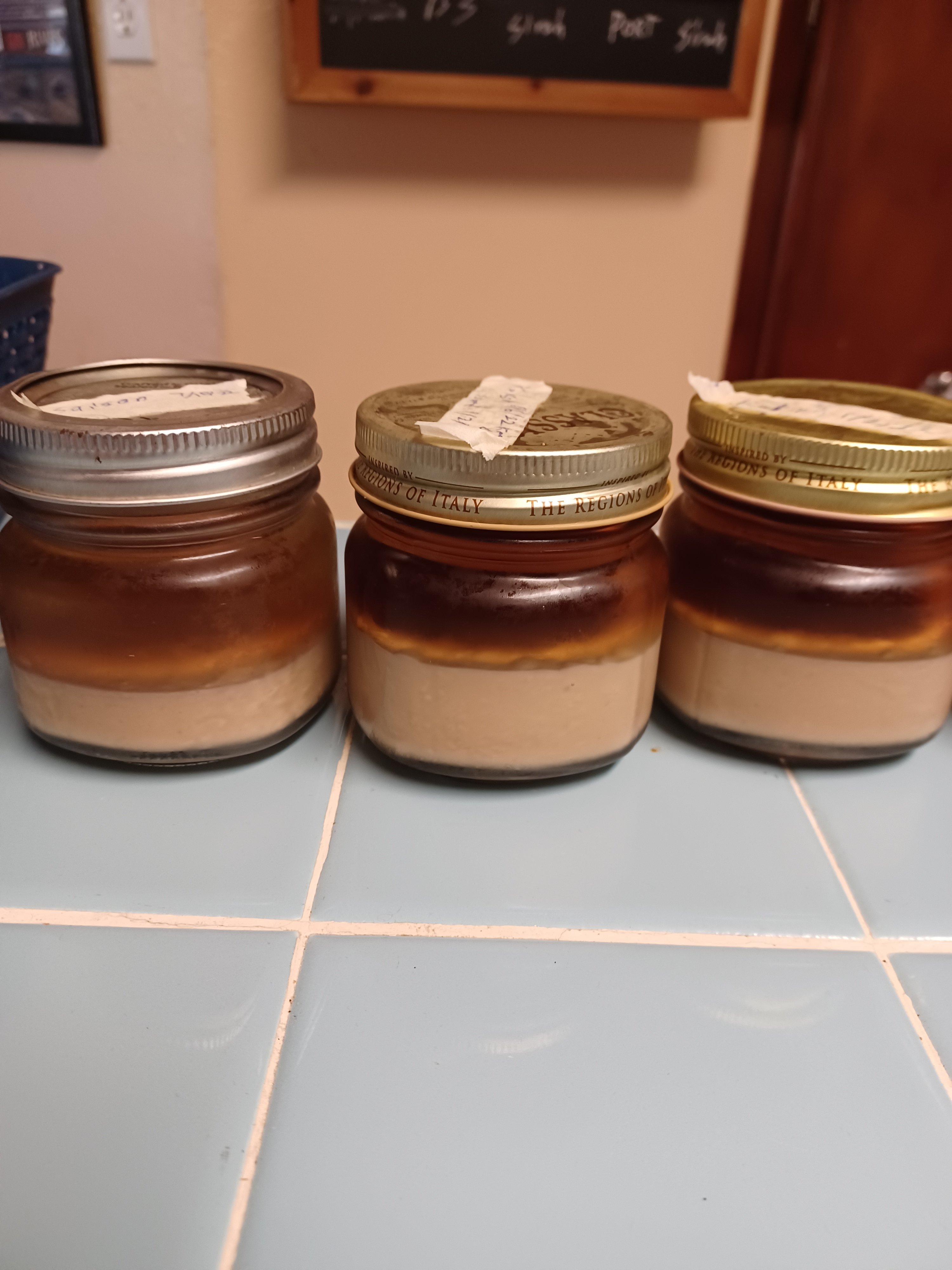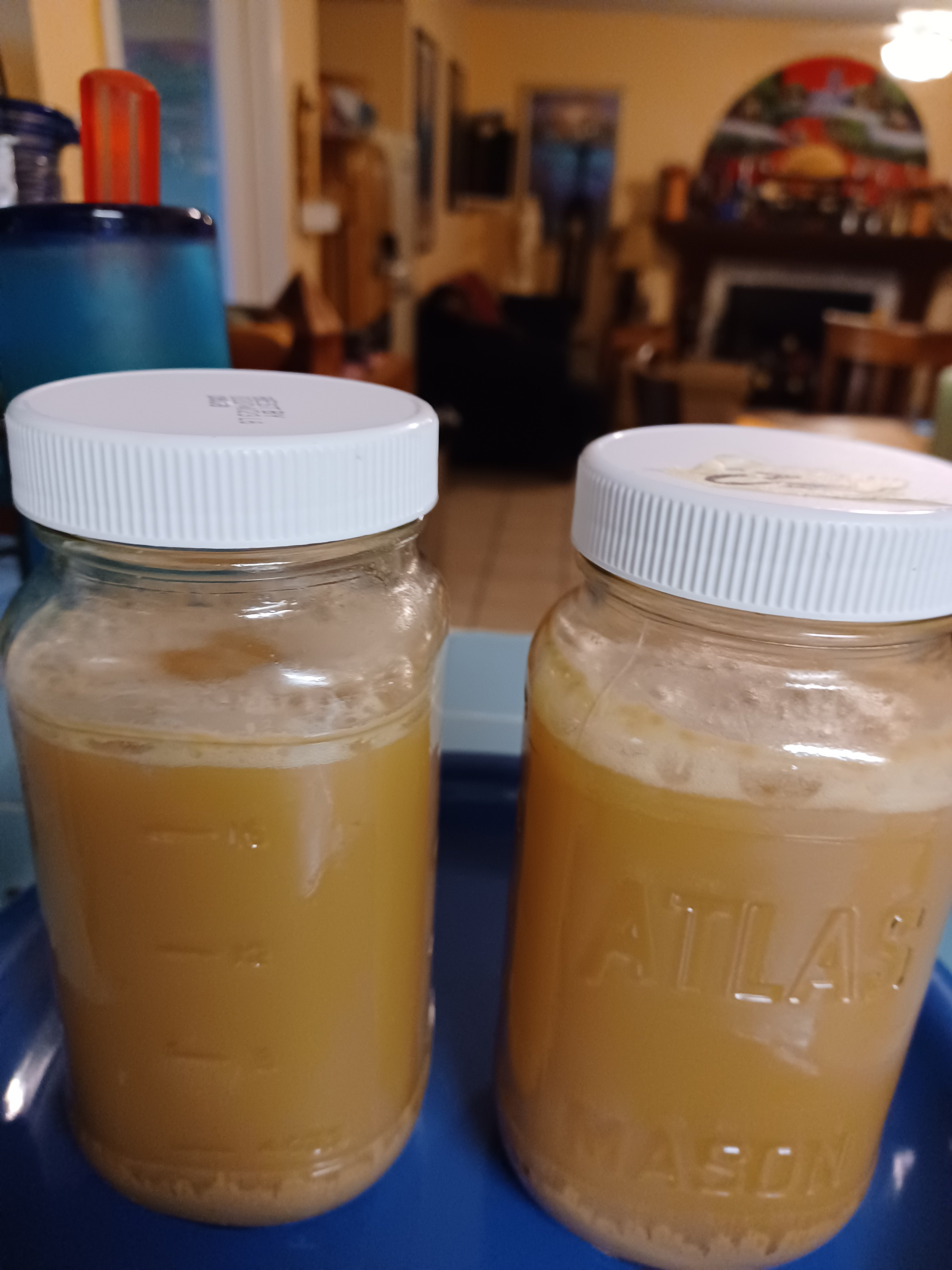I have lots of saved yeast cake from assorted beers that I have been doing direct pitches (roughly half cup of pure yeast cake) with and not had issues.
That said, I am planning to use some belle saison cake to attept to restart an RIS that has stopped far short of expectations.
I'm thinking a starter and not a direct pitch would be the best method in this case.
Never having done a starter, I have read where I should use 10-1 ratio water and DME. 1000ml to 100 grams.
The picture is my typical yeast cakes saved in half pint jars. Should I use the whole cake you see in a jar or just scoop out a tablespoon or whatever amount to make a starter to warm the yeast up for duty?

That said, I am planning to use some belle saison cake to attept to restart an RIS that has stopped far short of expectations.
I'm thinking a starter and not a direct pitch would be the best method in this case.
Never having done a starter, I have read where I should use 10-1 ratio water and DME. 1000ml to 100 grams.
The picture is my typical yeast cakes saved in half pint jars. Should I use the whole cake you see in a jar or just scoop out a tablespoon or whatever amount to make a starter to warm the yeast up for duty?




